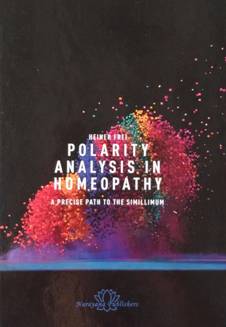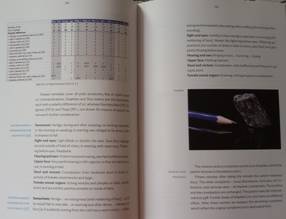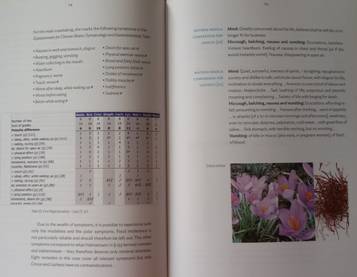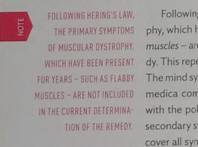This review by me was first published in the October 2014 e-zine issue of www.hpathy.com
———————————–
 Polarity Analysis in Homeopathy – A Precise Path to the Simillimum
Polarity Analysis in Homeopathy – A Precise Path to the Simillimum
Author: Heiner Frei
First English Edition 2013
Reviewed by Dr. Firuzi Mehta
Published by Narayana Publishers
ISBN: 978-3-95582-001-5
Hardbound
No. of pages:312
€ 49.00
In recent years, there has been renewed interest in Boenninghausen’s Therapeutic Pocket Book (TPB) that was first published in 1846. This repertory follows Boenninghausen’s premise that valuable modalities, sensations and findings of a remedy are capable of generalization. His TPB was valued greatly for its precise grading of symptoms but fell into disuse eventually probably due to the popularity of Kent’s philosophy and the apparent ease of use of Kent’s repertory. The value of the Therapeutic Pocket Book (TPB) was pretty much unknown to generations of homeopaths as homeopathic colleges focussed on Kent and his works while touching upon Boenninghausen’s works only cursorily.
Over the centuries, homeopathic fundamentals have remained the same but homeopaths have constantly striven to make remedy selection easier and more accurate. A lot of new methods and schools of thought have arisen from these endeavours. The ideal method needs to be one that can reliably and reproducibly determine the required remedy. Most of the new methods have not been statistically evaluated.
Polarity Analysis (PA) was developed by Heiner Frei for a scientifically rigorous Swiss double-blind study with homeopathic treatment of hyperactive children. This study demonstrated a significant difference between high-potency homeopathic remedies and placebo. The main challenge in reaching this result was to improve the reliability of all the factors used to determine the remedy.
Polarity Analysis is a development of Boenninghausen’s concept of contraindications. PA is a working method for the Therapeutic Pocket Book and Heiner Frei’s book provides us with a practical introduction to it.
The book consists of 3 Modules and an Appendix.
Module 1 describes Polarity Analysis in detail. It shows how PA follows the founding principles laid down by Hahnemann and the practical methods of old stalwarts like Boenninghausen, Hering and Lippe. It explains the value and use of Polar Symptoms (those symptoms that can have an opposite aspect, an opposite pole) in improving the reliability of the remedy choice. The author clearly explains the kind of case-taking that is required for suitable Polarity Analysis to take place. The author has simplified our work for us by creating valuable checklists and questionnaires for acute and chronic ailments. The symptoms used for these lists are from the Therapeutic Pocket Book and use the same language as the repertory. No symptom with less than 10 remedies in it is used. The patients themselves need to mark out their symptoms on the questionnaire which the homeopath can then confirm. Since these lists are built with repertory language and are specific to the TPB, this eliminates the possibility of errors creeping in due to faults in interpreting a patient’s symptoms and then converting them to repertory language.
These checklists and questionnaires are given towards the end of the book. They are also freely downloadable from the author’s website, www.heinerfrei.ch
Heiner Frei lays down, in simple language, the rules to be followed for PA to be most effective. He also clearly describes the dosage he follows and how follow-up assessments are judged.
The method of Polarity Analysis focuses on the Polarity Difference and also emphasises the importance given to contraindications. However, these details cannot be explained satisfactorily in a review.
Highlights of Polarity Analysis:
- Mainly physical modalities are to be used, since they are the ones that are most reliable.
- At least 5 polar symptoms should be used.
- Characteristic symptoms during the ailment are to be used; not traits that are present even in health.
- Mental symptoms are to be left for later, when remedy coverage is checked in the Materia Medica.
The repertorization results are weighted in the following order of importance:
- Absence of contraindications and size of polarity difference
- Completeness of symptom coverage
- Suitability of remedy in Materia Medica coverage.
Heiner Frei recommends the software program version V 2.6.0, 2012 of the Boenninghausen Arbeitsgemeinschaft (Boenninghausen Working Group). This software is preferred because it is the only one that uses the revised edition of the TPB that contains his final views on the grading of symptoms. A 30 day free trial version of this software is offered on www.boenninghausen.de
After describing the PA method in detail, Module 1 discusses the procedure to be followed in Acute Illness, along with case histories demonstrating the same.
Module 2 comprises procedure and case histories for Chronic Illness and for Mental Illness in Children and Teenagers.
Module 3 does the same for cases of Multimorbid Patients (those that have 3 or more complaints at the same time). Module 3 also has a section on Statistical Evaluation Studies of Polarity Analysis with and without checklists, comparing results with conventional homeopathic prescription methods. This is followed by a listing of the tools that are to be used for Polarity Analysis – the repertory, checklists, questionnaires and case logs.
Throughout the book, there are Quiz Questions which deal with the information covered till that point. These are very useful for clarifications and proper understanding of the topic. Answers to each Quiz are given in the Appendix at the end of the book.
My Impressions –
After a thorough reading which generated a lot of interest in this method, I downloaded the checklists and questionnaires from the author’s website www.heinerfrei.ch. I also downloaded the 30 day free trial version of the software offered at www.boenninghausen.de
On the whole, the method is easy to understand and use. The case-taking method is also simple and saves time compared to conventional homeopathic history-taking. The checklists and questionnaires, being in TPB language, remove the possibility of errors in interpreting a patient’s symptoms. The software is perfectly adapted to Polarity Analysis and is very easy to use. The fact that the questionnaires have symptoms in language of the TPB also makes the use of the TPB very easy for someone who is not conversant with the book.
The Notes in red alongside the margins are very useful when a quick reference is needed.
For beginners who may be fumbling with all the different and complex methods out there in the homeopathic world, this is a welcome break, with an assurance of good results, especially with more practice. For busy practitioners, it saves time, yet delivers better results.
The paper and print quality of the book is excellent; we have come to expect these high standards from Narayana Publishers.
Thank you, Heiner Frei!!



